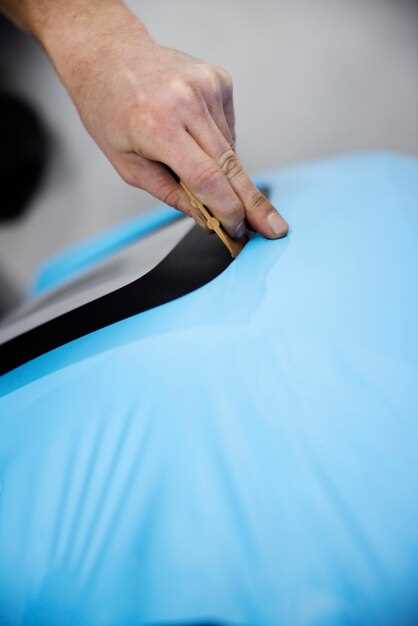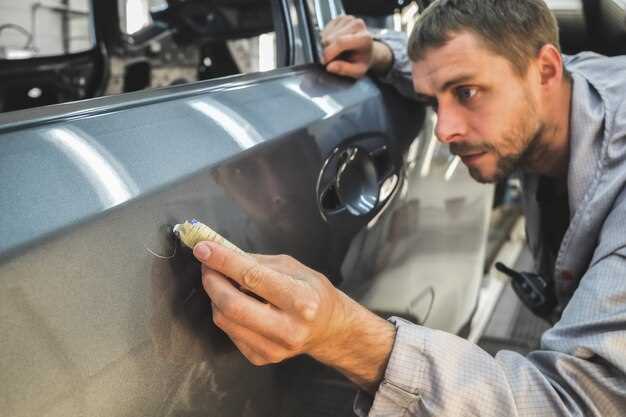
Completing a full restoration process is a significant achievement, but the final touches are what truly elevate the project. The finish on restored items, especially those made from ceramic, can determine the overall aesthetic and functional quality of the piece. Ensuring that every detail is meticulously addressed not only enhances visual appeal but also prolongs the longevity of the restored item.
After the primary restoration work is done, focusing on surface treatments, such as glazing or polishing, becomes essential. The right finish on ceramic pieces not only brings out their inherent beauty but also protects them from future wear and environmental factors. Selecting the appropriate materials for these final touches can make a significant difference in achieving a professional-looking result.
In this article, we will explore the critical steps involved in applying the final touches after a full restoration process. We will discuss techniques, materials, and tips to help you achieve a flawless finish that showcases the best aspects of your restored ceramic items. Whether you are a professional restorer or an enthusiast, understanding these nuances will help you to elevate your craft to new heights.
Choosing the Right Ceramic Finish for Your Surfaces

When it comes to the final touches in the restoration process, selecting the right ceramic finish is crucial for enhancing the aesthetic appeal and durability of your surfaces. A suitable finish not only elevates the overall look but also provides protection against wear and tear.
There are various types of ceramic finishes available, each offering unique characteristics. Glossy finishes create a shiny, reflective surface, making them ideal for spaces where light reflection is desired. They are easy to clean and maintain, but can show scratches and imperfections more readily. On the other hand, matte finishes provide a more subdued appearance, offering a natural look that can hide imperfections effectively. However, they may require more frequent polishing to maintain their appeal.
For high-traffic areas, consider a semi-gloss finish, which combines the benefits of both glossy and matte options. It offers a moderate sheen that is resilient against stains while providing a certain level of reflectivity. This type of finish is perfect for balancing aesthetics and practicality.
Another factor to consider is the application method. The choice between a spray finish and a brush-applied finish can impact not only the look but also the durability of the ceramic surface. Spray finishes often provide a more even and professional look, while brush-applied finishes can allow for more detailed work in smaller areas.
Ultimately, the right ceramic finish for your surfaces depends on the specific requirements of your space, desired aesthetics, and maintenance preferences. Assessing these factors thoroughly will ensure that your restoration efforts result in a stunning, long-lasting finish that you can take pride in.
Step-by-Step Guide to Achieving a High Gloss Polish

Achieving a high gloss polish requires careful preparation and meticulous execution. Follow these steps to attain a brilliant and smooth finish on your restored surfaces.
1. Clean the Surface: Begin by thoroughly cleaning the area you intend to polish. Use a suitable cleaner to remove dust, grease, and residues. This ensures that no particles interfere with the polishing process.
2. Sand the Surface: If the surface is rough or has previous imperfections, start sanding with fine-grit sandpaper (around 1500-2000 grit). Sand evenly to create a uniform texture that will enhance the polishing results. Always sand with the grain to avoid scratches.
3. Use a Polishing Compound: Select a high-quality polishing compound specific to the material of the surface. Apply a small amount of the compound to a clean microfiber towel or a foam applicator pad.
4. Apply the Compound: Working in small sections, gently rub the polishing compound onto the surface. Use a circular motion and moderate pressure, ensuring even coverage. This step is crucial for removing finer scratches and creating a reflective surface.
5. Buff the Surface: After applying the compound, use a clean, dry microfiber cloth to buff the surface. Employ overlapping motions and light pressure to maximize shine. This step helps to achieve a glossy finish by removing any excess polish and enhancing reflection.
6. Inspect the Finish: Once buffed, closely examine the surface for any imperfections or areas that may need additional polishing. If needed, repeat the process on those spots for a consistent high gloss appearance.
7. Final Touches: To enhance and protect the shiny finish, consider applying a top coat or wax. This final layer will add depth to the gloss while providing a shield against environmental factors.
Following these steps will help you achieve a stunning high gloss polish, giving your restored items a professional and eye-catching finish.
Common Mistakes to Avoid When Finalizing Your Restoration
Finalizing a restoration project is an essential step that can significantly influence the overall outcome. It is crucial to avoid common mistakes to ensure a flawless finish and a polished appearance.
Neglecting Surface Preparation: Proper surface preparation is the foundation of a successful finish. Skipping this step can lead to issues such as uneven paint adhesion and premature wear. Always clean, sand, and prime surfaces as needed to create a smooth base for the final coat.
Rushing the Drying Process: Patience is key when applying final finishes. Rushing the drying process can result in imperfections, such as streaks or bubbles. Allow each layer of paint or varnish to dry completely before applying subsequent coats to achieve a polished look.
Overlooking Final Touches: Details matter when it comes to restoration. Failing to address small imperfections, like touch-ups on chipped areas or minor scratches, can detract from the overall quality. Take the time to inspect and perfect every aspect before considering the job complete.
Using Inappropriate Products: Selecting the wrong finishing products can lead to unsatisfactory results. Ensure that the materials used are suitable for the specific surfaces and conditions. Research and choose high-quality finishes that will provide durability and enhance the aesthetic appeal.
Ignoring Environmental Conditions: Environmental factors play a significant role in the success of a restoration project. High humidity or low temperatures can hinder the drying and curing process of finishes. Always check weather conditions and aim for ideal application environments to achieve the best results.
By avoiding these common mistakes and focusing on perfection in your finishing touches, you can ensure a beautifully polished result that reflects the hard work invested in the restoration process.






